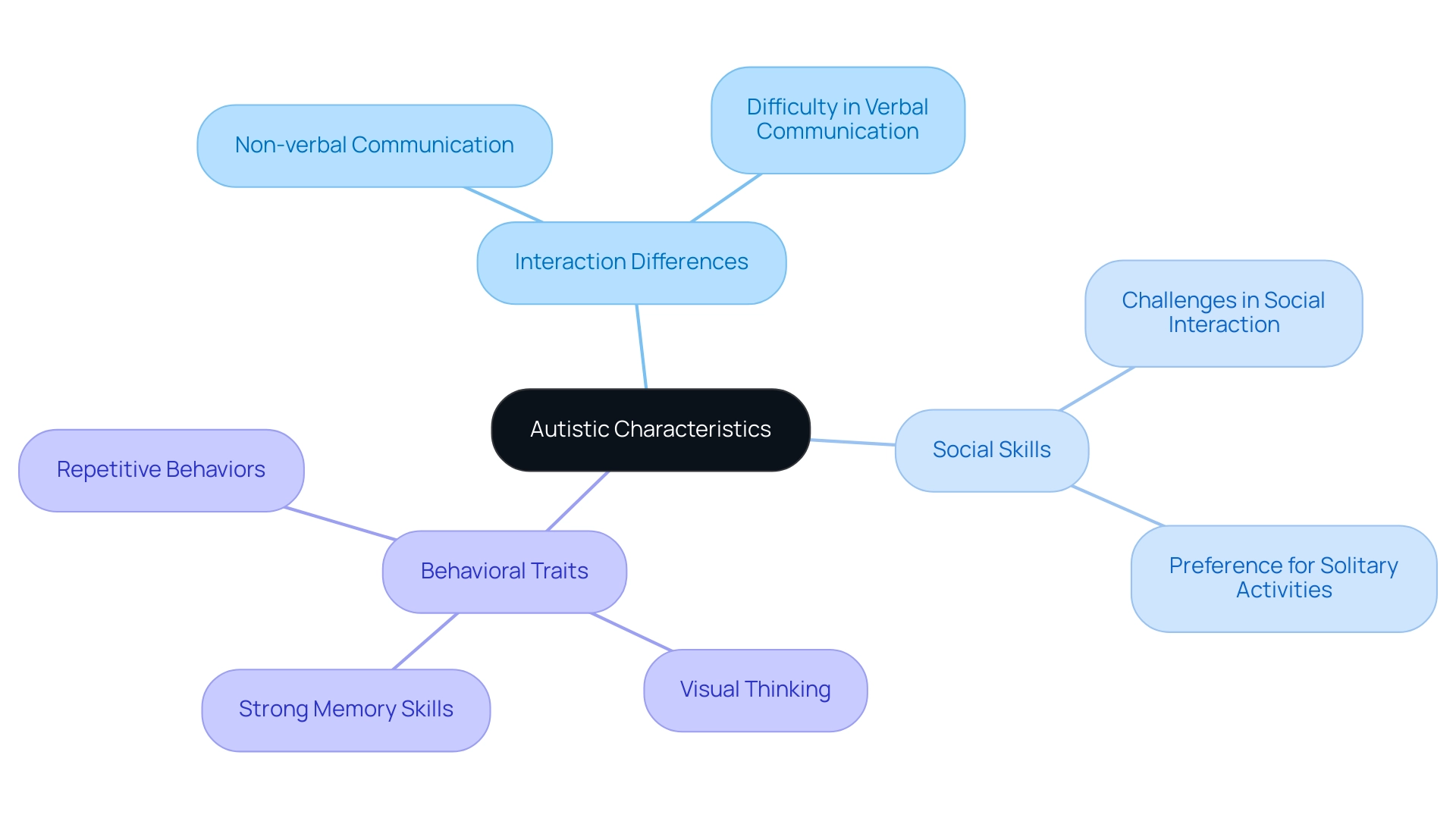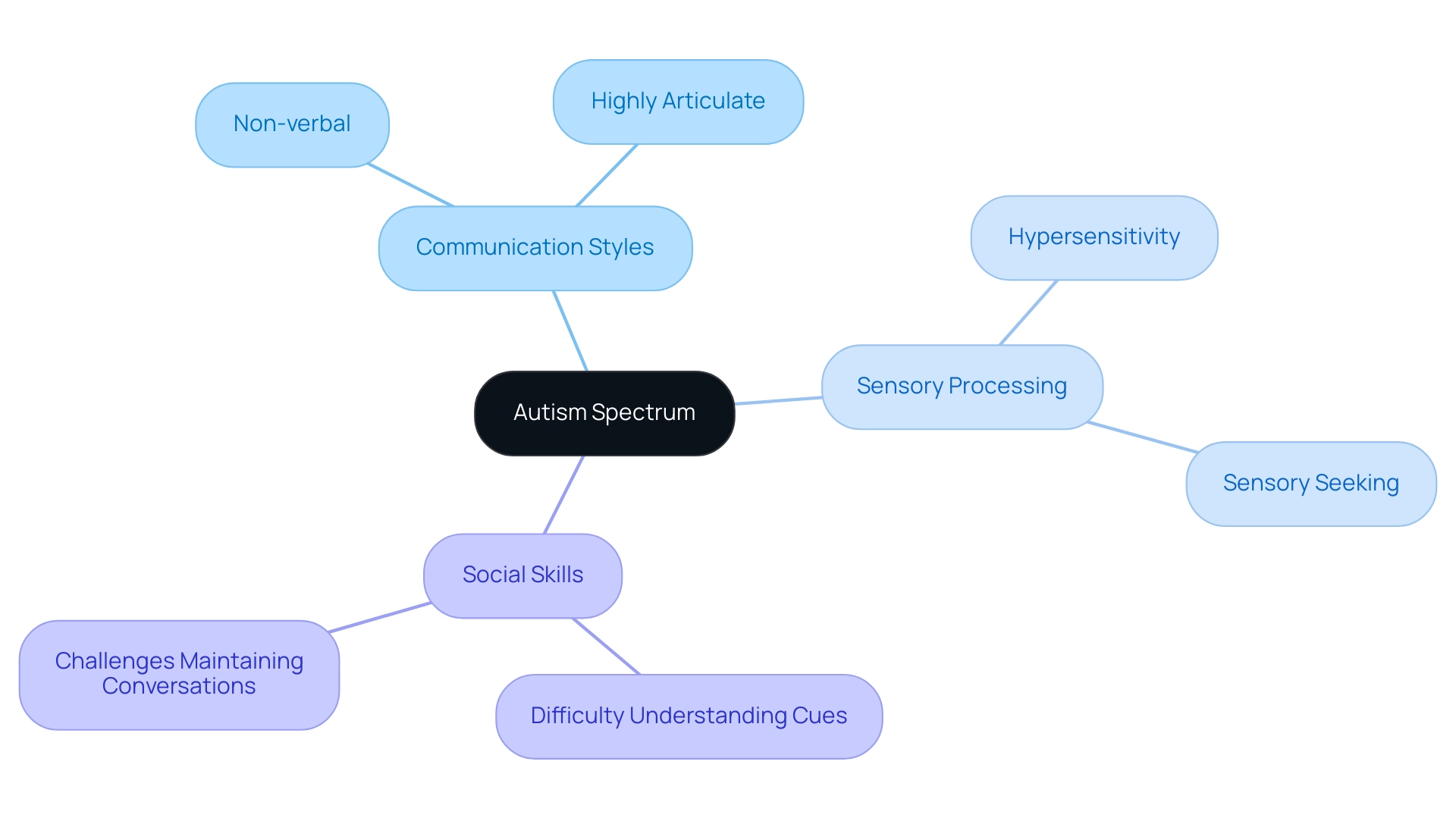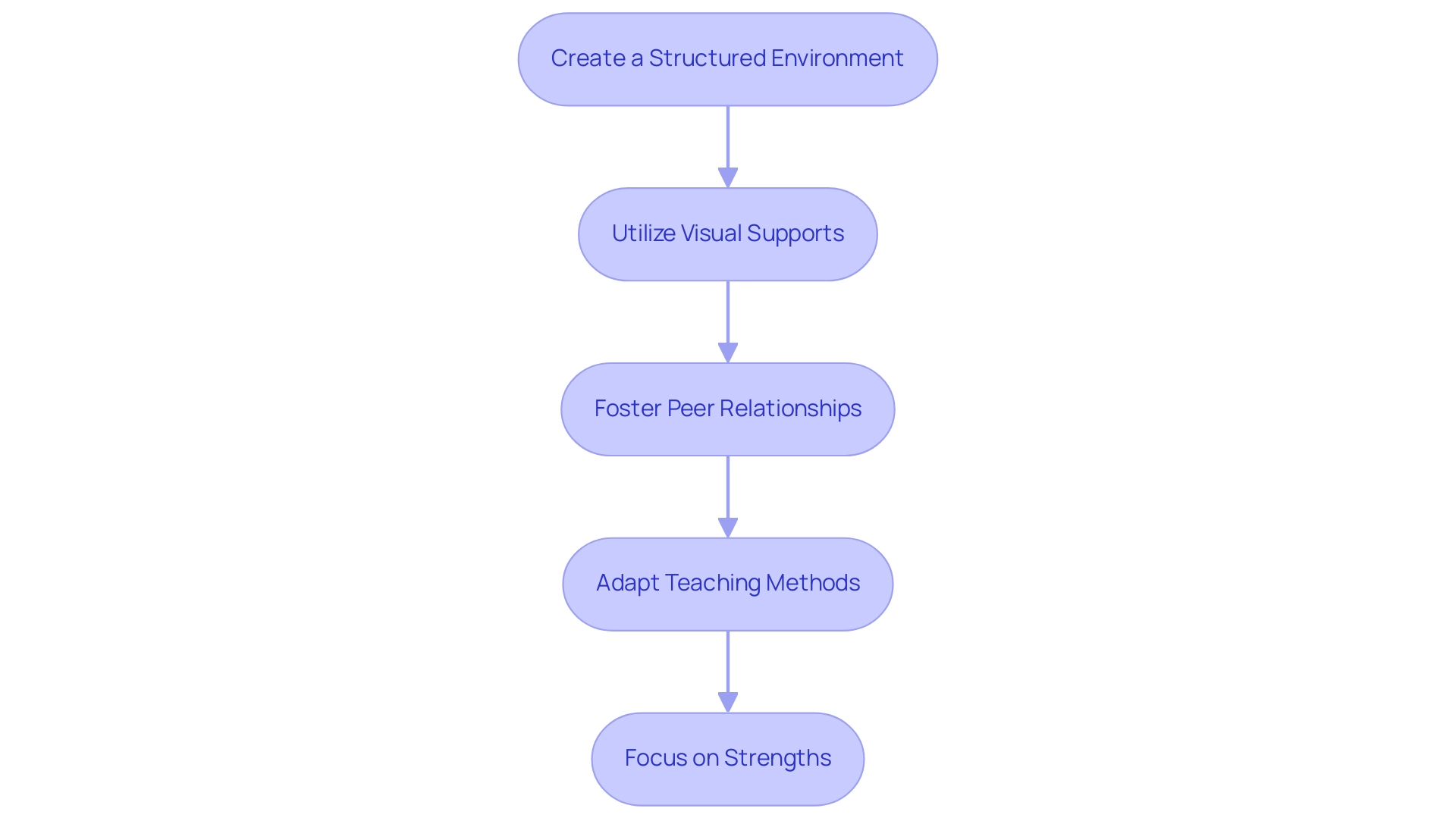Introduction
Understanding autism is a journey filled with unique challenges and opportunities for growth. As educators and caregivers navigate the complexities of autistic characteristics, it becomes essential to recognize the diverse ways in which these traits can manifest. From communication styles to social interactions, each individual on the spectrum presents a distinct set of needs and strengths.
This article delves into the intricacies of autism, highlighting the variability of traits and offering practical strategies to foster a supportive educational environment. By embracing a tailored approach, educators can empower autistic individuals to thrive and reach their full potential, ensuring they feel valued and understood in the learning process.
Defining Autistic Characteristics: A Comprehensive Overview
Autistic traits can appear in numerous forms and may encompass differences in interaction, social skills, and behavior. These traits often influence how people perceive and engage with the world around them. For instance, some may struggle with verbal communication, preferring non-verbal methods, while others may excel in specific areas such as visual thinking or memory.
It is crucial for educators and caregivers to familiarize themselves with these traits to provide effective support and understanding. Recognizing that autism is a spectrum means acknowledging that no two people will exhibit the same combination of characteristics.

Exploring the Spectrum: Variability in Autistic Traits
The autism spectrum includes a wide range of traits, from those who may be non-verbal to those who are highly articulate but face challenges with interactions. This variability can include differences in sensory processing, where some people may be hypersensitive to sounds or lights, while others might seek out sensory experiences.
Additionally, social skills may vary widely; some people may find it challenging to understand social cues, while others may engage in conversations but have difficulty maintaining them.
Educators and caregivers should approach each person with an open mind, recognizing that their journey is unique and requires different strategies for support.

Practical Approaches for Supporting Autistic Individuals in Educational Settings
To support autistic individuals in educational settings, consider implementing the following strategies:
- Create a Structured Environment: Establish routines and clear expectations to provide a sense of security and predictability. Visual schedules can be particularly beneficial.
- Utilize Visual Supports: Use visual aids, such as charts and diagrams, to enhance understanding and expression. This can help bridge gaps in verbal communication.
- Foster Peer Relationships: Encourage social interactions among peers through structured activities that promote teamwork, ensuring that autistic people feel included and supported.
- Adapt Teaching Methods: Differentiate instruction to cater to various learning styles and needs, using hands-on activities for kinesthetic learners or technology for visual learners.
- Focus on Strengths: Identify and nurture the strengths and interests of autistic individuals, leveraging these as tools for engagement and motivation. By incorporating their passions into learning, educators can enhance participation and enthusiasm.
Implementing these strategies can create a more inclusive and supportive educational environment for all students.

Conclusion
Understanding autism requires a commitment to recognizing and embracing the diversity within the spectrum. Autistic characteristics can manifest in countless ways, affecting communication, social skills, and sensory processing. It is this very variability that necessitates a tailored approach by educators and caregivers.
By familiarizing themselves with the unique traits of each individual, they can offer the most effective support and ensure that every person on the spectrum feels understood and valued.
The practical strategies outlined for fostering an inclusive educational environment are vital steps toward empowering autistic individuals. Creating structured environments, utilizing visual supports, fostering peer relationships, adapting teaching methods, and focusing on strengths are essential practices that can significantly enhance the learning experience. These approaches not only promote engagement but also cultivate a sense of belonging, allowing autistic students to thrive academically and socially.
In summary, embracing the uniqueness of each individual on the autism spectrum is crucial for their development and well-being. By adopting a compassionate and informed approach, educators and caregivers can make a profound difference in the lives of autistic individuals, helping them navigate their educational journeys with confidence and support. Now is the time to advocate for understanding, acceptance, and tailored strategies that empower every learner to reach their full potential.




